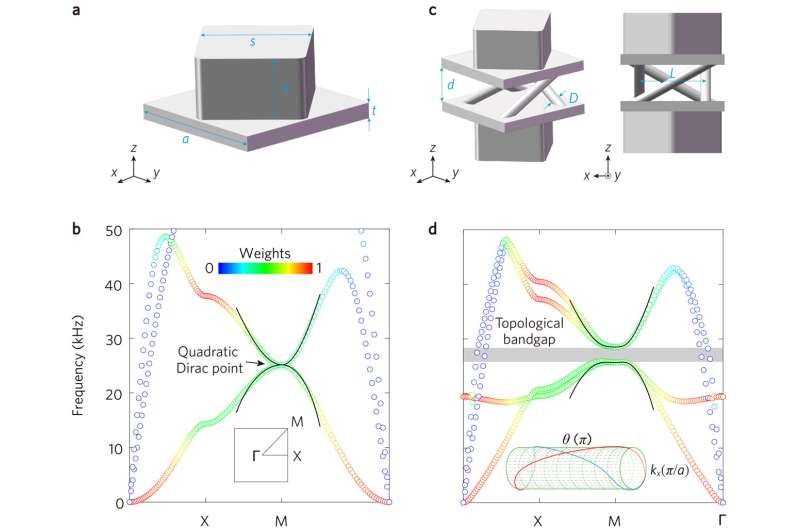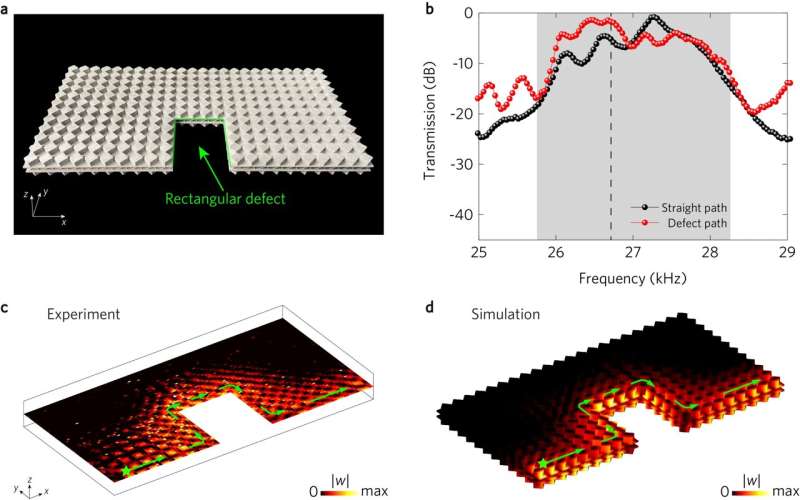Using 3D metal-printing topological materials to manipulate full-vector elastic waves

A collaboration between Prof. Weiying Deng at South China University of Technology, Prof. Feng Li at Beijing Institute of Technology, and Prof. Zhengyou Liu at Wuhan University was recently published online in National Science Review. There is growing interest in elastic waves manipulated by topological edge modes, which have unparalleled advantages such as lower energy dissipation, higher flexibility and unidirectional transmission.
However, whether an elastic metamaterial with time reversal symmetry and single topological phase can support topological edge modes on its own boundary is still an open question. By harnessing the full-vector feature of elastic waves, synthetic spin-orbital couplings were induced in a bilayer elastic metamaterial and thus give rise to the nontrivial topological band gap.
Researchers fabricated this elastic topological insulator using a 3D metal-printed method, and further experimentally demonstrated the existence and back-scattering immunity of the topological edge states. Finally, a heterostructure of the metamaterial that exhibits tunable edge transport was shown by tuning the height of the device.
The results may find potential applications in splitters and switches for elastic waves, and enable the construction of a monolithic elastic network. By stacking the structure layer-by-layer, this system can be extended to three dimensions with intriguing topological transports, such as robust surface states and higher-order hinge states.

More information: Ying Wu et al, Topological materials for full-vector elastic waves, National Science Review (2022).
Provided by Science China Press




















